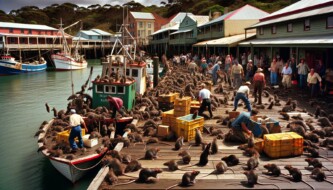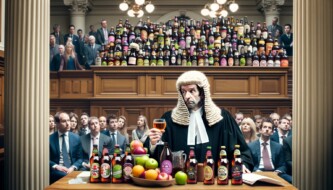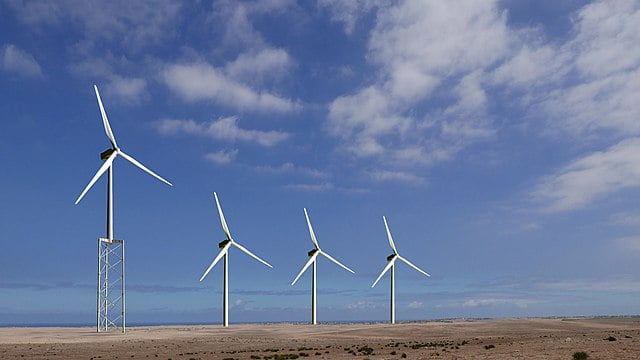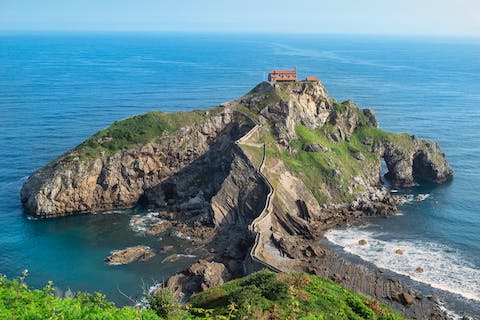Long ago, there was a big dinosaur called a tyrannosaur. It was like a big, scary lizard with sharp teeth. Scientists found the bones of a young tyrannosaur and saw something special inside. The young dinosaur had eaten two baby dinosaurs. This tells us that little tyrannosaurs liked to eat small animals.
The bones of the young tyrannosaur were found in a place called Alberta Badlands. It took many years for people to clean the bones and see what was inside. They found the leg bones of the baby dinosaurs inside the young tyrannosaur’s tummy. This shows us that young tyrannosaurs ate differently than big ones. Big tyrannosaurs would bite hard and eat big pieces, but the young ones would pick and choose the best parts to eat.
Original news source: Tyrannosaur’s last meal was two baby dinosaurs (BBC)
Listen:
Slow
Normal
Fast
Group or Classroom Activities
Warm-up Activities:
– Charades
Instructions: Divide the class into two teams. Write down key vocabulary words from the article on separate pieces of paper and put them in a hat. One student from each team will take turns picking a word from the hat and acting it out without speaking. The team members will try to guess the word. The team that guesses the most words correctly wins.
– News Summary
Instructions: In pairs or small groups, students will take turns summarizing the article in their own words. Encourage them to use their English skills to convey the main points of the article. After each summary, the other students can provide feedback and corrections.
– Vocabulary Pictionary
Instructions: Divide the class into pairs. Give each pair a set of vocabulary words from the article. One student will draw a picture to represent a word while the other student tries to guess the word. They can only use English to communicate. After a certain amount of time, switch roles. The pair with the most correct guesses wins.
– Opinion Poll
Instructions: Write a question related to the article on the board, such as “Do you think dinosaurs were scary?” Have the students raise their hands or stand on different sides of the classroom to indicate their opinion. Then, ask a few students to explain their reasoning in English. This activity encourages students to use simple English phrases to express their opinions and engage in a discussion.
– Think-Pair-Share
Instructions: Give each student a few minutes to think about a question related to the article, such as “Why do you think the young tyrannosaurs ate differently than the big ones?” Then, have them pair up with a partner and discuss their thoughts in English. Finally, ask a few pairs to share their ideas with the whole class. This activity encourages students to practice speaking and listening skills while also developing their critical thinking abilities.
Comprehension Questions:
1. What was the big dinosaur called?
2. What did the big dinosaur eat?
3. Where were the bones of the young dinosaur found?
4. What did the scientists find inside the young dinosaur?
5. How did the young tyrannosaurs eat differently than the big ones?
6. How did the big tyrannosaurs eat?
7. What did the young tyrannosaurs like to eat?
Go to answers ⇩
Listen and Fill in the Gaps:
Long ago, there was a big dinosaur called a tyrannosaur. It was like a big, scary lizard with sharp teeth. Scientists found the (1)______ of a (2)______ tyrannosaur and saw something special inside. The young dinosaur had eaten two baby dinosaurs. This tells us that (3)______ tyrannosaurs (4)______ to eat small animals.
The bones of the young tyrannosaur were found in a place called Alberta Badlands. It took many years for people to clean the bones and see what was (5)______. They found the leg bones of the baby (6)______ inside the young tyrannosaur’s tummy. This shows us that young tyrannosaurs ate differently than big ones. Big tyrannosaurs would bite hard and eat big (7)______, but the young ones would (8)______ and choose the best parts to eat.
Go to answers ⇩
Discussion Questions:
Students can ask a partner these questions, or discuss them as a group.
1. What is a tyrannosaur?
2. How would you feel if you saw a big, scary dinosaur?
3. Do you think it’s interesting that the young tyrannosaur ate two baby dinosaurs? Why or why not?
4. What do you think it means when the article says the young tyrannosaur liked to eat small animals?
5. Have you ever seen dinosaur bones before? Where?
6. Do you like dinosaurs? Why or why not?
7. How do you think the scientists cleaned the bones of the young tyrannosaur?
8. What do you think the young tyrannosaur’s tummy looked like?
9. Do you think big tyrannosaurs and young tyrannosaurs ate the same way? Why or why not?
10. What do you think the best parts to eat are?
11. Have you ever seen a dinosaur bite hard? What did it eat?
12. Can you imagine what it would be like to be a young tyrannosaur? What would you eat?
Individual Activities
Multiple Choice Questions:
1. What is the name of the big dinosaur in the story?
(a) lizard
(b) tyrannosaur
(c) dinosaur
(d) sharp teeth
2. What did scientists find inside the young tyrannosaur?
(a) big pieces of meat
(b) bones of baby dinosaurs
(c) sharp teeth
(d) scary lizards
3. Where were the bones of the young tyrannosaur found?
(a) Alberta Badlands
(b) big tyrannosaurs
(c) small animals
(d) sharp teeth
4. How did the young tyrannosaurs eat differently than big ones?
(a) They ate big pieces of meat.
(b) They had sharp teeth.
(c) They liked to eat small animals.
(d) They picked and chose the best parts to eat.
5. What did big tyrannosaurs do when they ate?
(a) They picked and chose the best parts to eat.
(b) They had sharp teeth.
(c) They bit hard and ate big pieces.
(d) They liked to eat small animals.
6. What did the young tyrannosaur eat?
(a) big pieces of meat
(b) small animals
(c) sharp teeth
(d) two baby dinosaurs
7. Where did the young tyrannosaur’s bones need to be cleaned?
(a) Alberta Badlands
(b) big tyrannosaurs
(c) small animals
(d) sharp teeth
8. What did the young tyrannosaur’s bones show us?
(a) Big tyrannosaurs ate differently than young ones.
(b) Young tyrannosaurs and big tyrannosaurs ate the same.
(c) Young tyrannosaurs ate differently than big ones.
(d) Young tyrannosaurs didn’t eat anything.
True or False Questions:
1. Scientists found the feathers of a young dinosaur and saw something ordinary inside.
2. It took many years for people to clean the bones and see what was inside.
3. The young dinosaur had eaten two baby dinosaurs, which tells us that little dinosaurs liked to eat small animals.
4. They found the tail bones of the baby dinosaurs inside the young dinosaur’s tummy.
5. This shows us that young dinosaurs ate differently than big ones.
6. Big dinosaurs would bite softly and eat big pieces, but the young ones would pick and choose the worst parts to eat.
7. Long ago, there was a big dinosaur that was like a scary lizard with sharp teeth.
8. The bones of the young dinosaur were found in a place called Alberta Mountains.
Go to answers ⇩
Write a Summary:
Write a summary of this news article in two sentences.
Writing Questions:
Answer the following questions. Write as much as you can for each answer.
1. What kind of dinosaur was found in the Alberta Badlands?
2. What did the young tyrannosaur like to eat?
3. Where were the leg bones of the baby dinosaurs found?
4. How did big tyrannosaurs eat?
5. How did the young tyrannosaurs eat differently from the big ones?
Answers
Comprehension Question Answers:
1. What was the big dinosaur called?
The big dinosaur was called a tyrannosaur.
2. What did the big dinosaur eat?
The big dinosaur ate small animals.
3. Where were the bones of the young dinosaur found?
The bones of the young dinosaur were found in Alberta Badlands.
4. What did the scientists find inside the young dinosaur?
The scientists found the leg bones of two baby dinosaurs inside the young dinosaur.
5. How did the young tyrannosaurs eat differently than the big ones?
The young tyrannosaurs picked and chose the best parts to eat, while the big ones would bite hard and eat big pieces.
6. How did the big tyrannosaurs eat?
The big tyrannosaurs would bite hard and eat big pieces.
7. What did the young tyrannosaurs like to eat?
The young tyrannosaurs liked to eat small animals.
Go back to questions ⇧
Listen and Fill in the Gaps Answers:
(1) bones
(2) young
(3) little
(4) liked
(5) inside
(6) dinosaurs
(7) pieces
(8) pick
Go back to questions ⇧
Multiple Choice Answers:
1. What is the name of the big dinosaur in the story?
Answer: (b) tyrannosaur
2. What did scientists find inside the young tyrannosaur?
Answer: (b) bones of baby dinosaurs
3. Where were the bones of the young tyrannosaur found?
Answer: (a) Alberta Badlands
4. How did the young tyrannosaurs eat differently than big ones?
Answer: (d) They picked and chose the best parts to eat.
5. What did big tyrannosaurs do when they ate?
Answer: (c) They bit hard and ate big pieces.
6. What did the young tyrannosaur eat?
Answer: (d) two baby dinosaurs
7. Where did the young tyrannosaur’s bones need to be cleaned?
Answer: (a) Alberta Badlands
8. What did the young tyrannosaur’s bones show us?
Answer: (c) Young tyrannosaurs ate differently than big ones.
Go back to questions ⇧
True or False Answers:
1. Scientists found the feathers of a young dinosaur and saw something ordinary inside. (Answer: False)
2. It took many years for people to clean the bones and see what was inside. (Answer: True)
3. The young dinosaur had eaten two baby dinosaurs, which tells us that little dinosaurs liked to eat small animals. (Answer: True)
4. They found the tail bones of the baby dinosaurs inside the young dinosaur’s tummy. (Answer: False)
5. This shows us that young dinosaurs ate differently than big ones. (Answer: True)
6. Big dinosaurs would bite softly and eat big pieces, but the young ones would pick and choose the worst parts to eat. (Answer: False)
7. Long ago, there was a big dinosaur that was like a scary lizard with sharp teeth. (Answer: True)
8. The bones of the young dinosaur were found in a place called Alberta Mountains. (Answer: False)
Go back to questions ⇧













